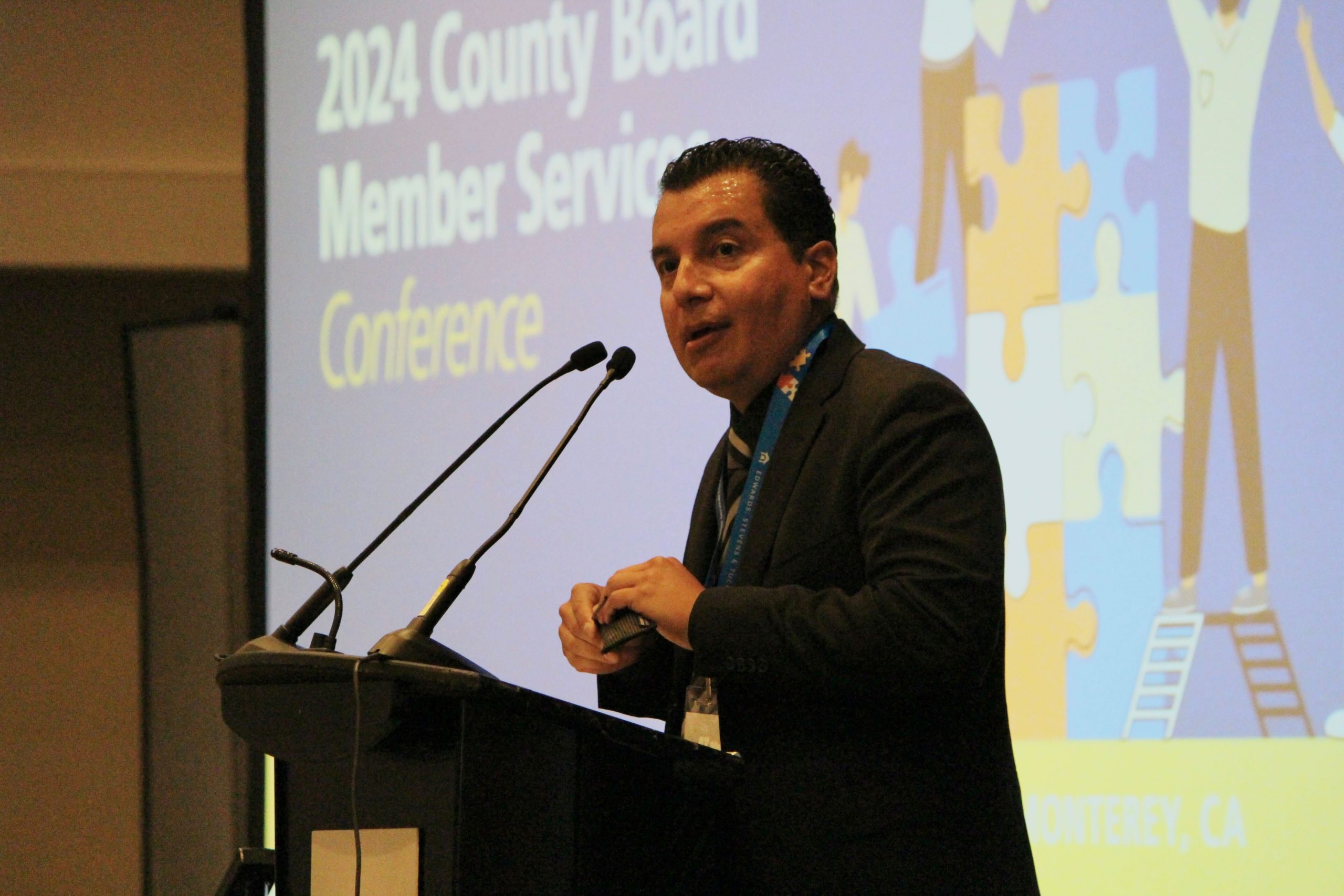by Carol Brydolf, CSBA writer
Local Educational Agencies can’t rely on the California Department of Education to figure out how to implement the Common Core State Standards and other key education reforms looming on the horizon.
Speaking to members of CSBA’s Delegate Assembly in Sacramento May 18, Rick Miller, former deputy state schools superintendent and executive director of the California Office to Reform Education, said that’s one reason 10 school districts banded together to form the CORE coalition, which is optimistic that federal education officials will approve its waiver plan that releases participating LEAs from some of the harsher requirements of the No Child Left Behind Act.
“We weren’t getting any guidance from the state, so we did this on our own,” Miller told delegates, who met in Sacramento for their twice-yearly assembly May 18-19.
CORE hopes to accomplish what the state of California has repeatedly failed to do—receive a federal NCLB waiver. If federal officials sign off on CORE’s application, members of the coalition agree to implement strict new accountability measures that CORE believes have the potential to dramatically improve student achievement. The waiver would give participating districts flexibility over 20 percent of Title I funds that had been earmarked for certain NCLB requirements.
Nine of 10 CORE districts have signed onto the coalition’s waiver request, and if it’s approved CORE has invited all school districts and charter schools in the state to participate in the waiver plan. Miller told delegates that CORE has had encouraging talks with federal education officials. CORE will submit a revised application within a week or so.
“We’re extraordinarily excited,” Miller said.
As part of CORE’s waiver plan, member LEAs must agree to a list of conditions, including “fully transitioning” to the Common Core State Standards and administering aligned assessments by 2014-15. Instructions for participating and detailed background information about the coalition and its waiver plan are posted on the CORE website.
The ‘right drivers of change’
Miller said CORE’s waiver plan is based in large part on the work of Michael Fullan, a Canadian researcher who advances an argument that’s been made by governing boards and other education leaders throughout California and the nation: that incentives, goals and sanctions included in top-down accountability legislation like the federal NCLB act mistakenly rely on “negative drivers” to improve student achievement.
“We don’t think NCLB works,” Miller said. “We don’t think these things are the right drivers of change.”
What’s called for is collaboration between districts and education leaders to make positive changes. Punishing and blaming teachers and sanctioning struggling schools are ineffective strategies, CORE and Fullan argue.
On the other hand, CORE’s accountability system also measures students’ social and emotional development, school climate and takes steps to provide positive school culture rooted in the belief that all students can succeed. In some areas, the waiver program sets more rigorous targets than those included in state and federal accountability systems.
“CORE is not trying to escape accountability,” Miller said. “We embrace it.”
In fact, CORE is “hyper-focused” on eliminating the achievement gap between different student subgroups, Miller said, and the CORE accountability program “goes way beyond” what’s required in the NCLB Annual Yearly Progress measure of student achievement.
Others invited to join CORE plan
Districts that opt to participate in the CORE waiver plan will be required to collect “enormous amounts of data” about how students are doing. The state’s data collection system, Miller said, “doesn’t help schools do better.”
If the data show that schools operating under the waiver program are struggling, Miller said, they will be paired with schools that are doing better. “There will be no sanctions, no hammer,” Miller said, only a shared commitment to finding out what works and implementing successful strategies.
“It’s not a top-down system,” he said. “It’s us working together.”
As part of the waiver plan, districts must also establish teacher evaluations that measure effectiveness. LEAs will need to bargain with teachers’ unions to get them to sign off on new evaluation plans, but Miller said preliminary talks with union leaders have been “promising.” Miller pointed out that Los Angeles has already worked with teachers to implement such a plan.
Miller encouraged LEAs to learn from and support each other as they formulate Common Core implementation plans and other fundamental changes.
“It would have been helpful if the state had done more,” Miller said. “But ultimately, it’s up to districts to decide what works best.”
The $1 billion for CCSS preparation that’s included in Gov. Jerry Brown’s May budget revision is “a huge step forward,” Miller said. “The money helps, but not as much as $3-$4 billion would have.”
Miller said CORE is convinced that its plan will work. “We did this because the state wasn’t,” he said. “But we feel we have a better system. It’s not that test scores don’t matter, it’s that they are not the only things that matter. This is about building relationships and trust.”
See Miller’s PowerPoint presentation for more details about CORE’s waiver request.
Rick Miller is Executive Director of the California Office to Reform Education. CORE provides the connective tissue for a partnership between Clovis, Fresno, Garden Grove Long Beach, Los Angeles, Oakland, Sacramento, Sanger, and San Francisco and Santa Ana unified school districts. These ten districts, representing over a million students, have committed to participate in a collaborative learning community to facilitate and expedite shared education reforms.






Be the first to reply